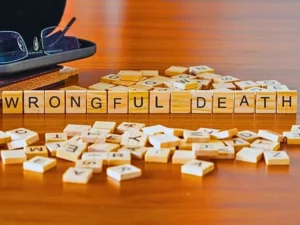Following safety tips is essential for all skiers, regardless of their skill level. Anyone, including experts, can get injured while skiing. Approximately 600,000 skiing and snowboarding injuries are reported every year. Common injuries sustained include injuries to the head, shoulder, elbow, thumb, and knee. Taking precautions helps people lower their risk of these injuries.

Ski Accident Prevention Tips
Although there have been major improvements in ski equipment and lessons, skiing still carries a risk for injury. People should follow these safety tips to avoid accidents and injuries on the slopes.
Wearing Protective Equipment
A helmet is one of the most important pieces of protective ski gear. Researchers from the University of Vermont have attributed the declining death rate per skier visits to the increased use of helmets. Helmets lower the risk of severe head injuries.
Skiers should ensure the helmets they wear are specifically designed for snow sports. Other vital pieces of protective equipment include:
- Goggles
- Knee and elbow pads
- Fitted ski boots and bindings
- Wrist guards (for snowboarding)
Using equipment that is broken increases the chances of accidents occurring. Skiers should ensure their equipment is in good condition. Anything that is unreliable should be replaced.
Physical Preparation
Skiing is a physically demanding sport that requires participants to be in excellent physical condition. Knee injuries are some of the most common ski injuries. They can be prevented by increasing the body’s mobility and strengthening the muscles that surround the knee.
Strengthening the legs and core and improving stamina in the off-season help skiers get into better shape for the slopes. Cold weather makes the muscles become tighter and more injury-prone. Performing warm-up exercises before hitting the slopes loosens up the muscles, helping reduce people’s risk of injury.
Avoiding Skiing Alone
Skiing without other people around is highly dangerous. If a skier is involved in an accident while alone, he or she risks experiencing hypothermia or even death if he or she cannot get assistance.
It is recommended for skiers to have a partner. Partners should keep each other in sight, particularly in deep snow. That way, if he or she is involved in an accident, a partner can rescue the skier or call for help.
Awareness of Surroundings
Skiers should scan the area for obstacles like patches of ice, trees, rocks, and other hazards. They should then avoid skiing or snowboarding near those obstacles. The marked trails tend to be the safest, so following them is crucial. The out of ski boundary areas can be potential avalanche areas, so it is advisable for skiers to avoid them.
When taking breaks, people should stop in locations where the riders and skiers above them can easily see them. Avoiding distracting activities like listening to music with headphones or texting also helps skiers be more aware while on the slopes.
Knowing Skill Levels and Limits
There are different skill levels for skiers and snowboarders. People staying within their skill level as much as possible can help prevent collisions and other types of accidents. Beginners trying to keep up with their more experienced friends endanger themselves and other people. They should master the easy slopes first before moving to the more challenging ones.
Skiers should listen to their bodies to avoid overexerting themselves. It is best for them to stop when they feel tired or get hurt. More fatigue means more risk of falls and crashes.
What Happens After a Ski Accident?
Even if skiers take these precautions to avoid injuries, accidents can still happen. They can be caused by the recklessness or negligence of another party. Treating skiing and snowboarding injuries is expensive. In one study, the cost of treating children’s skiing injuries was found to be $22,000 per patient. Liability is, therefore, a crucial issue after a ski accident. A personal injury lawyer can offer injured skiers advice on their potential legal remedies.
Some of the circumstances that can make a ski resort liable for injuries include:
- Failing to repair or maintain ski lifts
- Operating lifts in unsafe weather conditions
- Failing to operate equipment properly
- Allowing the existence of dangerous conditions on the path of skiers
- Failing to warn people of hazards
Another party other than the ski resort may also be liable for skiing injuries. In collisions between skiers, the skier who recklessly plows into someone else is likely to be held responsible for the other person’s injuries. The skiing equipment used can be defective. In such a case, the manufacturer may be liable for the injuries.
The effects of skiing injuries may not present themselves immediately. For that reason, injured skiers should seek medical attention even as they try determining if another party was at fault for their accident.






